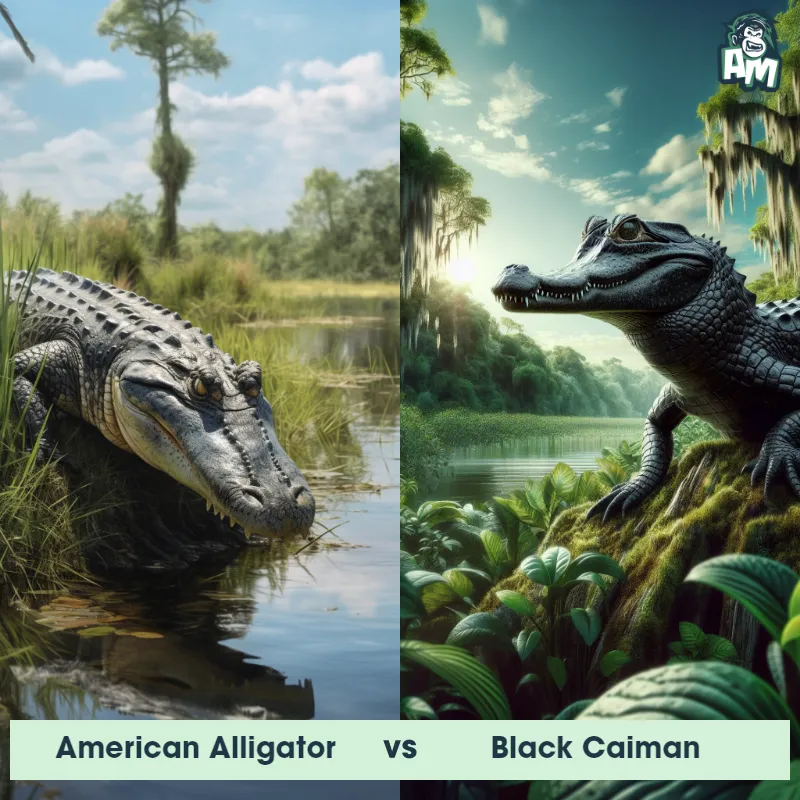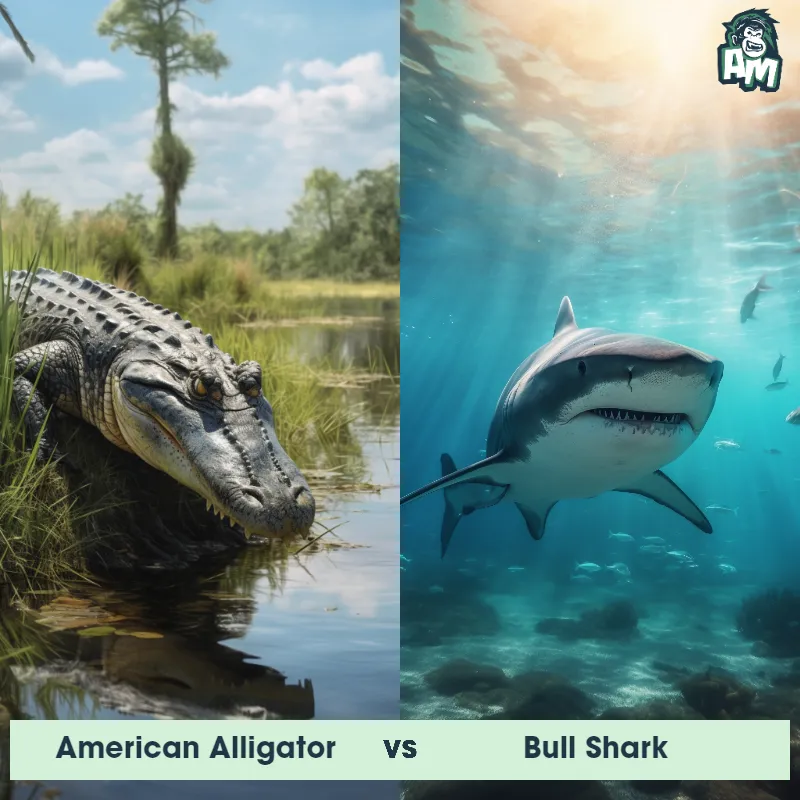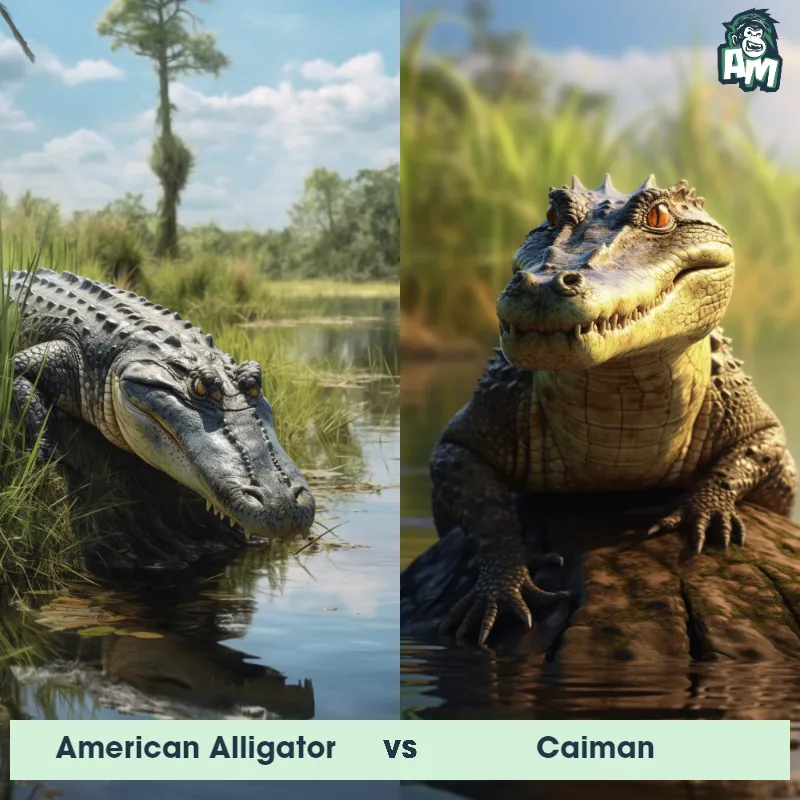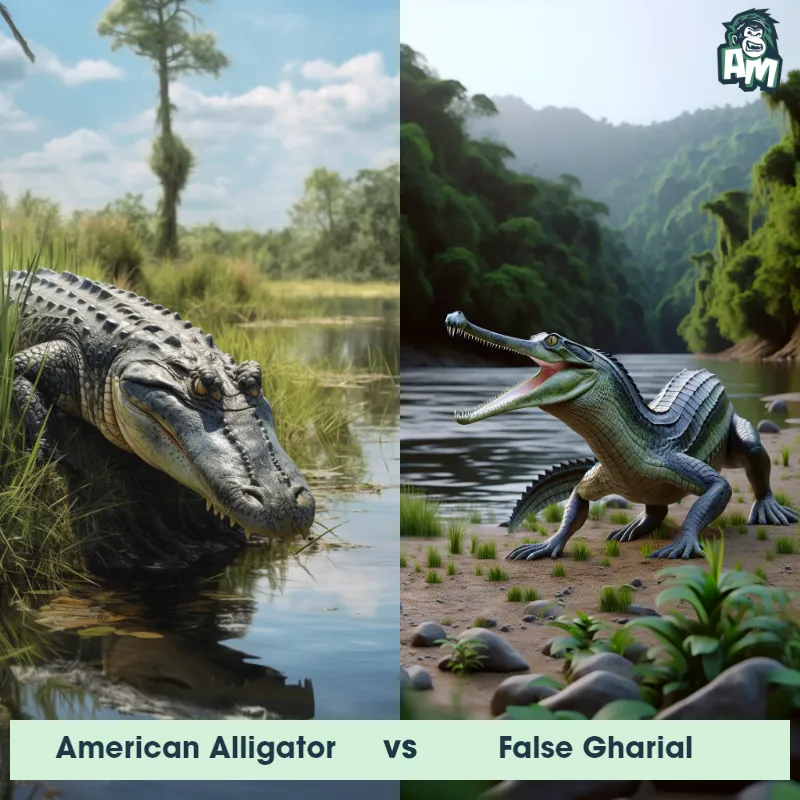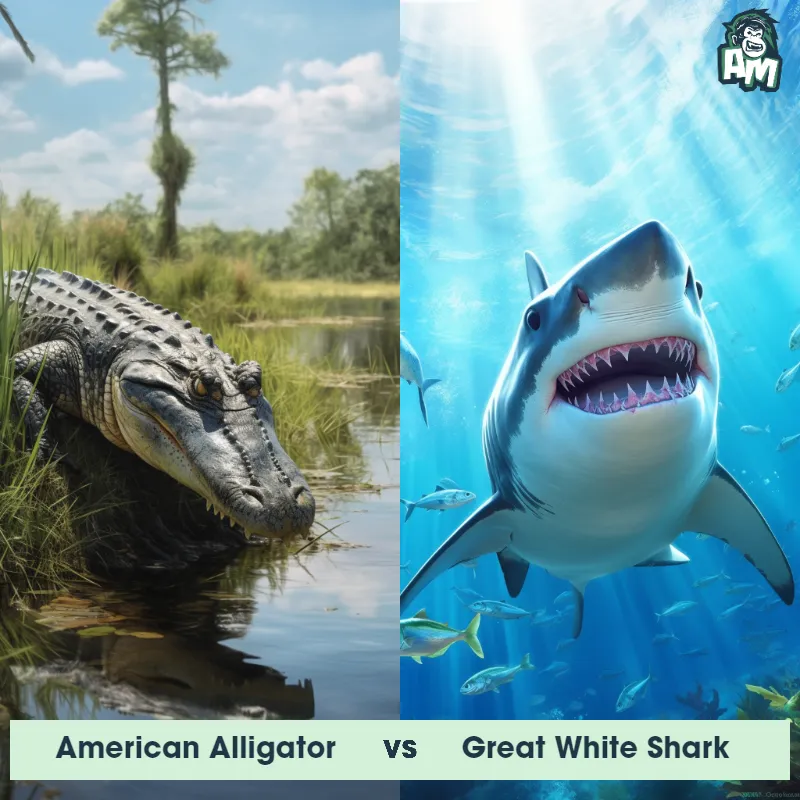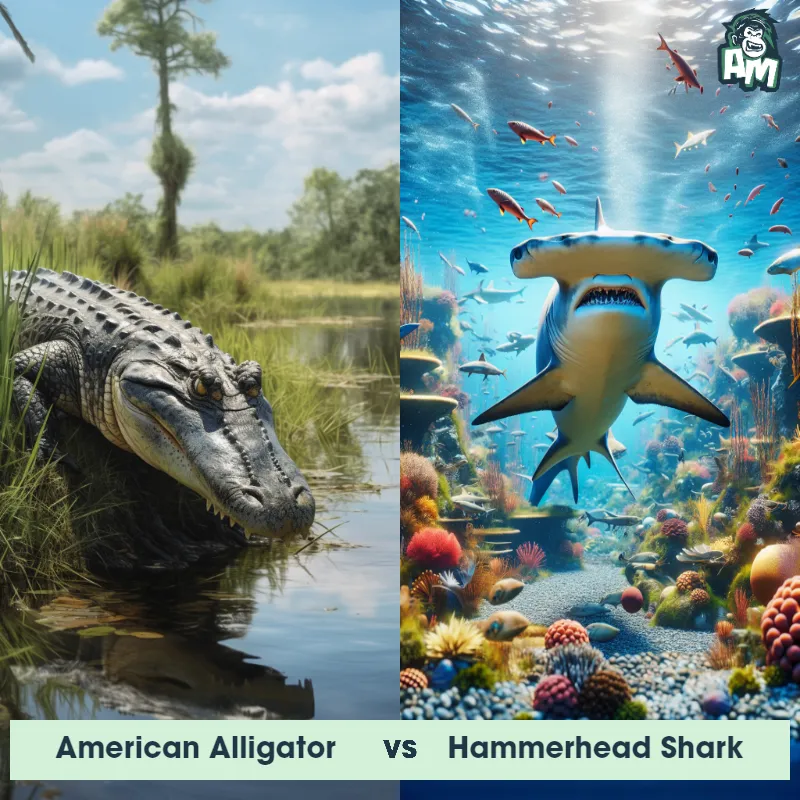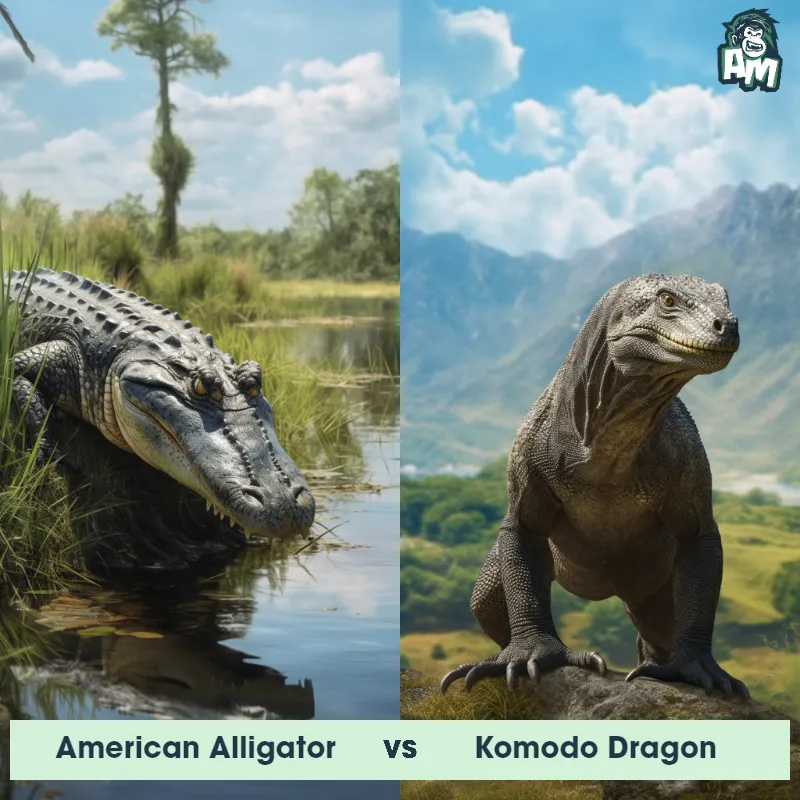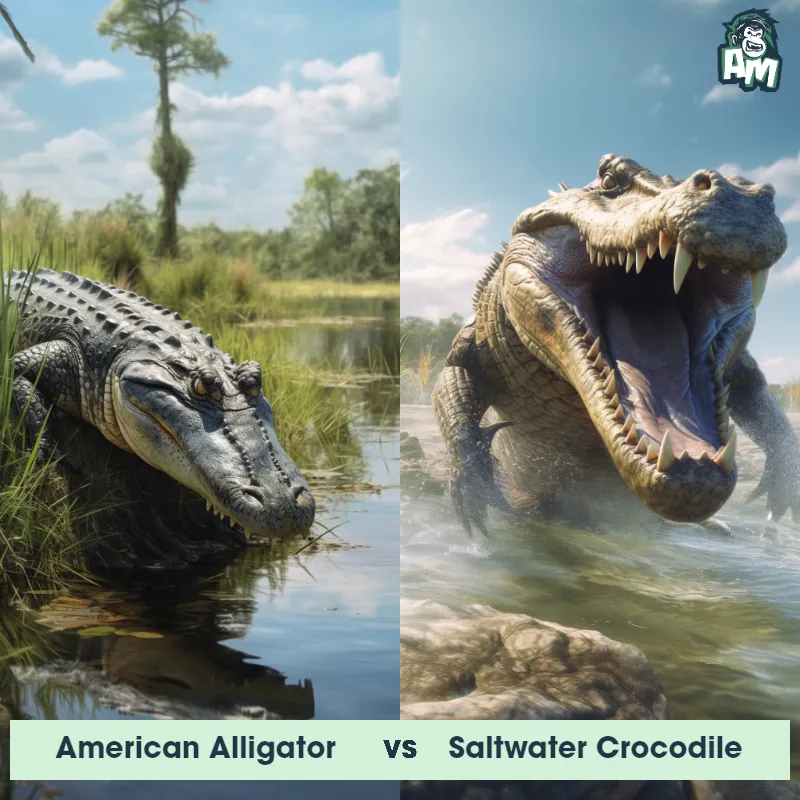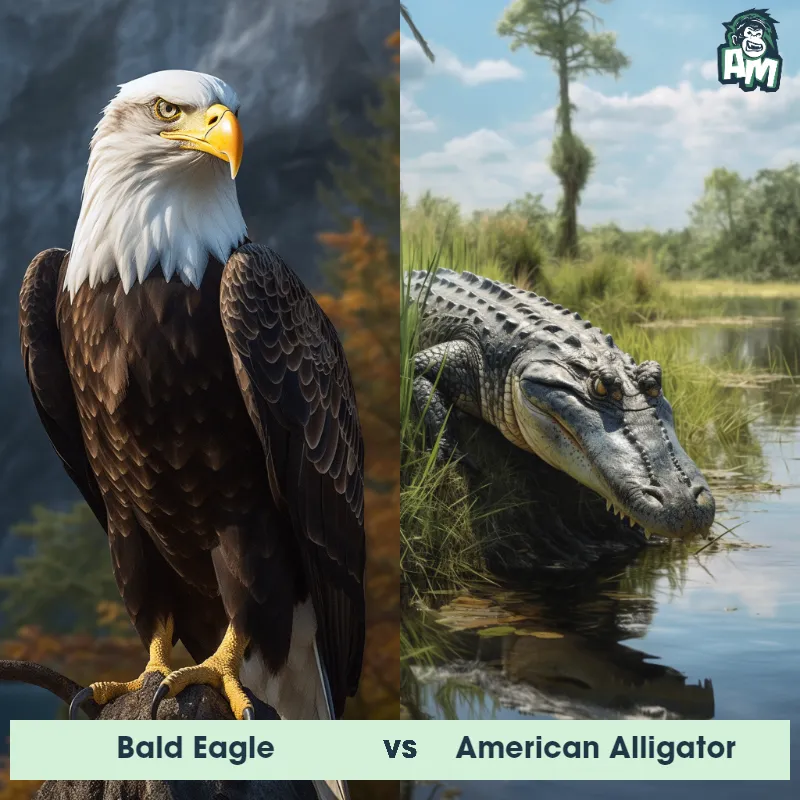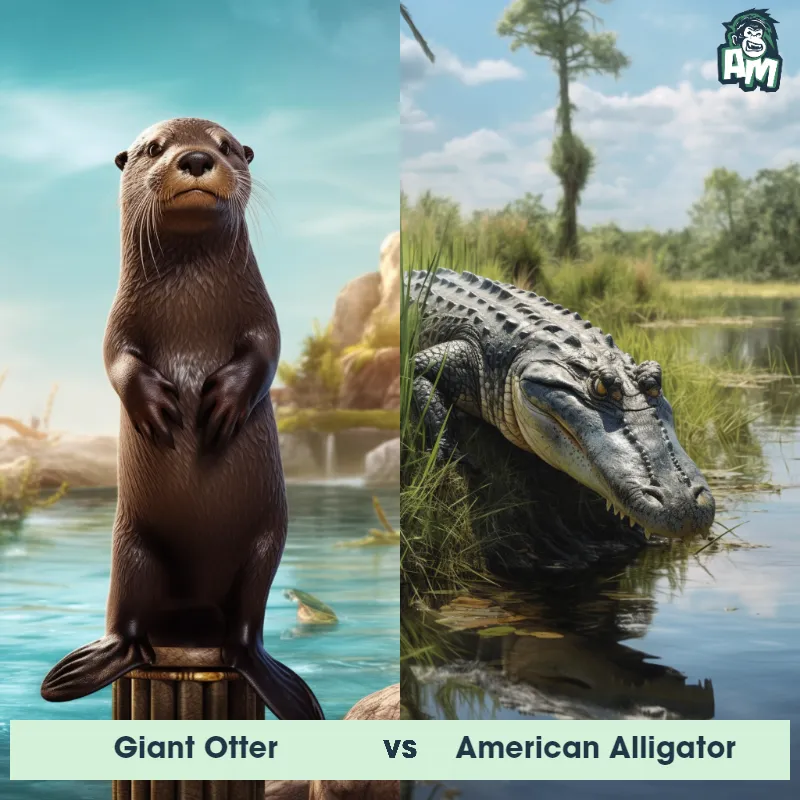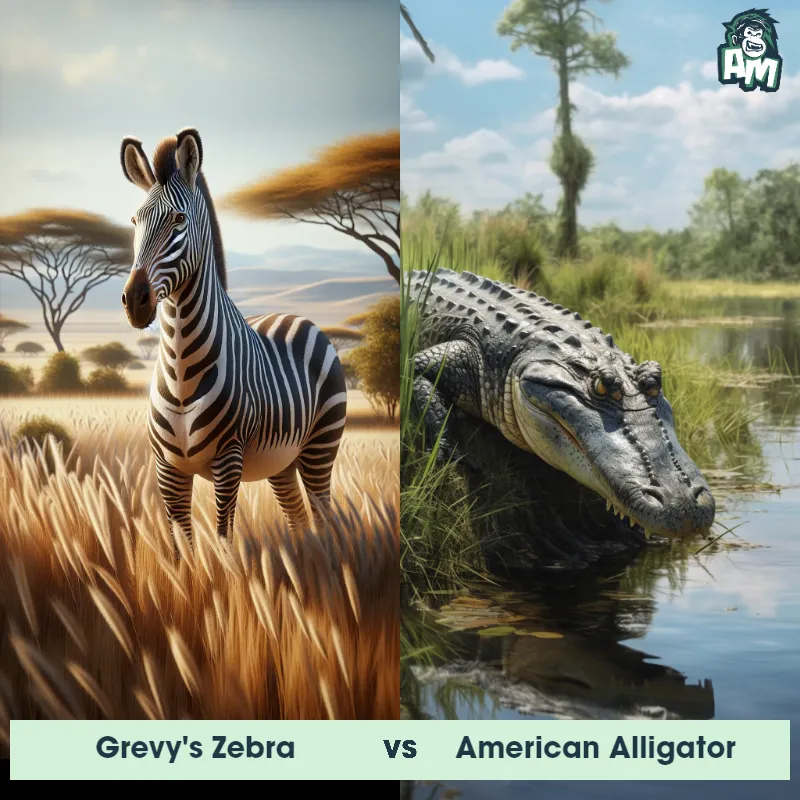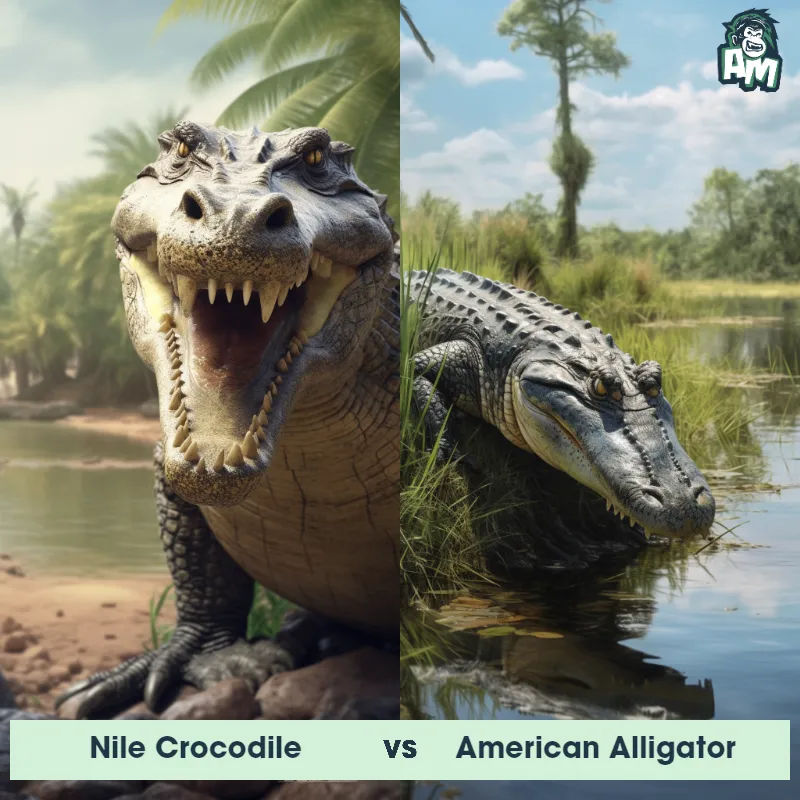The American Alligator
The American Alligator, also known as Alligator mississippiensis, is a large reptile that can be found in freshwater habitats across the southeastern United States. These impressive creatures have a powerful body covered in tough, armored scales and can grow up to 13 to 15 feet in length, weighing up to 1,000 pounds. With a broad, rounded snout, muscular jaws lined with sharp teeth, and a muscular tail, the alligator is perfectly adapted for life in the water. They have excellent eyesight and hearing and are known for their ability to submerge and remain hidden underwater for long periods of time, patiently waiting for prey to approach.
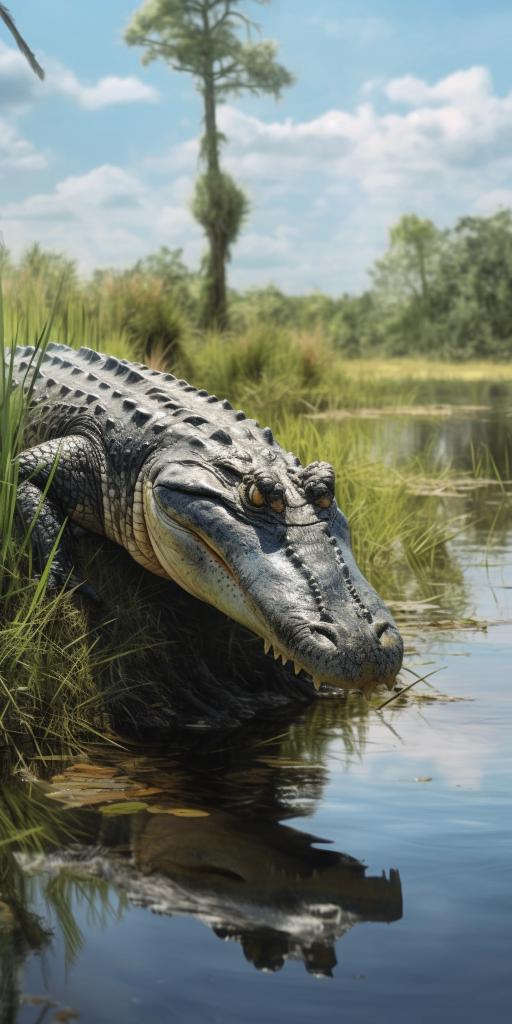
| American Alligator | |
|---|---|
| Size | Up to 14 feet (4.3 meters) |
| Weight | Over 1,000 pounds (453.6 kilograms) |
| Speed | Speed: 20 mph (32.19 km/hr) |
| Key Strength | Powerful jaws and muscular body |
| Biggest Weakness | Slow movement on land |
| Scientific Name | Alligator mississippiensis |
| Family | Alligatoridae |
| Habitat | Freshwater habitats |
| Geography | Southeastern United States |
| Diet | Carnivorous, eats fish, turtles, birds, and mammals |
| Lifespan | 30 years - 50 years |

The American Alligator
The American Alligator, also known as Alligator mississippiensis, is a large reptile that can be found in freshwater habitats across the southeastern United States. These impressive creatures have a powerful body covered in tough, armored scales and can grow up to 13 to 15 feet in length, weighing up to 1,000 pounds. With a broad, rounded snout, muscular jaws lined with sharp teeth, and a muscular tail, the alligator is perfectly adapted for life in the water. They have excellent eyesight and hearing and are known for their ability to submerge and remain hidden underwater for long periods of time, patiently waiting for prey to approach.
Fun Fact: Despite their powerful bite, the muscles that open an alligator's jaws are relatively weak, meaning that once their jaws are closed, it is surprisingly easy to keep them shut with just a little bit of pressure.
| American Alligator | |
|---|---|
| Size | Up to 14 feet (4.3 meters) |
| Weight | Over 1,000 pounds (453.6 kilograms) |
| Speed | Speed: 20 mph (32.19 km/hr) |
| Key Strength | Powerful jaws and muscular body |
| Biggest Weakness | Slow movement on land |
| Scientific Name | Alligator mississippiensis |
| Family | Alligatoridae |
| Habitat | Freshwater habitats |
| Geography | Southeastern United States |
| Diet | Carnivorous, eats fish, turtles, birds, and mammals |
| Lifespan | 30 years - 50 years |
American Alligator Matchups
We use AI to simulate matchups between the American Alligator and other animals. Our simulation considers size, strength, and natural predatory behaviors to determine the most likely outcome.

Can't find the Matchup you want?
Create Your Own MatchupAmerican Alligator: Diet, Predators, Aggression, and Defensive Behaviors
What do American Alligators eat?
American Alligators are opportunistic feeders and will consume a variety of prey, including fish, turtles, birds, mammals, and even smaller alligators. They are known to hunt by ambushing their prey near the water's edge and have a diet primarily consisting of fish and small mammals.
Do American Alligators have any predators?
While American Alligators are apex predators in their ecosystem, they are known to be preyed upon by larger alligators, crocodiles, and occasionally by other carnivores such as bears and panthers. However, adult American Alligators have few natural predators due to their size and strength.
Are American Alligators aggressive?
American Alligators can display aggressive behavior, especially during the mating season or when protecting their territory or young. They are known to be territorial animals and will defend their space when threatened. However, they typically do not view humans as prey and attacks on humans are rare.
Do American Alligators fight with each other?
American Alligators are known to be territorial and will engage in fights with other alligators, especially during the breeding season. These fights are typically displays of dominance and are used to establish hierarchy within the population. Alligators will use their size, strength, and sharp teeth in these battles.
How do American Alligators defend themselves?
American Alligators have several methods of defending themselves against potential threats. They can hiss, bellow, and snap their jaws as warning signals. When feeling threatened, they may use their powerful tails to propel themselves away quickly or submerge under the water to escape. They can also use their sharp teeth and powerful jaw muscles to defend themselves in a physical confrontation.
What is the biggest weakness of American Alligators in a fight?
Despite their strength and formidable jaws, American Alligators have a relatively weaker skeletal structure compared to their size. This weakness can be exploited by larger predators or in fights with other alligators, where strategic attacks to vulnerable areas such as the eyes or throat can potentially incapacitate them. Additionally, alligators have a limited endurance when it comes to prolonged fights, making them susceptible to exhaustion.
Fun Fact: Unlike many reptiles that lay eggs and leave them unattended, female American alligators are attentive and protective mothers, constructing large nests made of vegetation to lay their eggs and then carefully guarding them until they hatch.
Fun Fact: American alligators are essential to maintaining the health of their ecosystems as they create "alligator holes" by digging into the ground with their snouts and tails. These holes collect and retain water, providing a vital source of water during dry periods for a variety of species in the area, making the alligators ecosystem engineers.



